Want a Lean Body for Good? Adopt These 8 Eating Habits
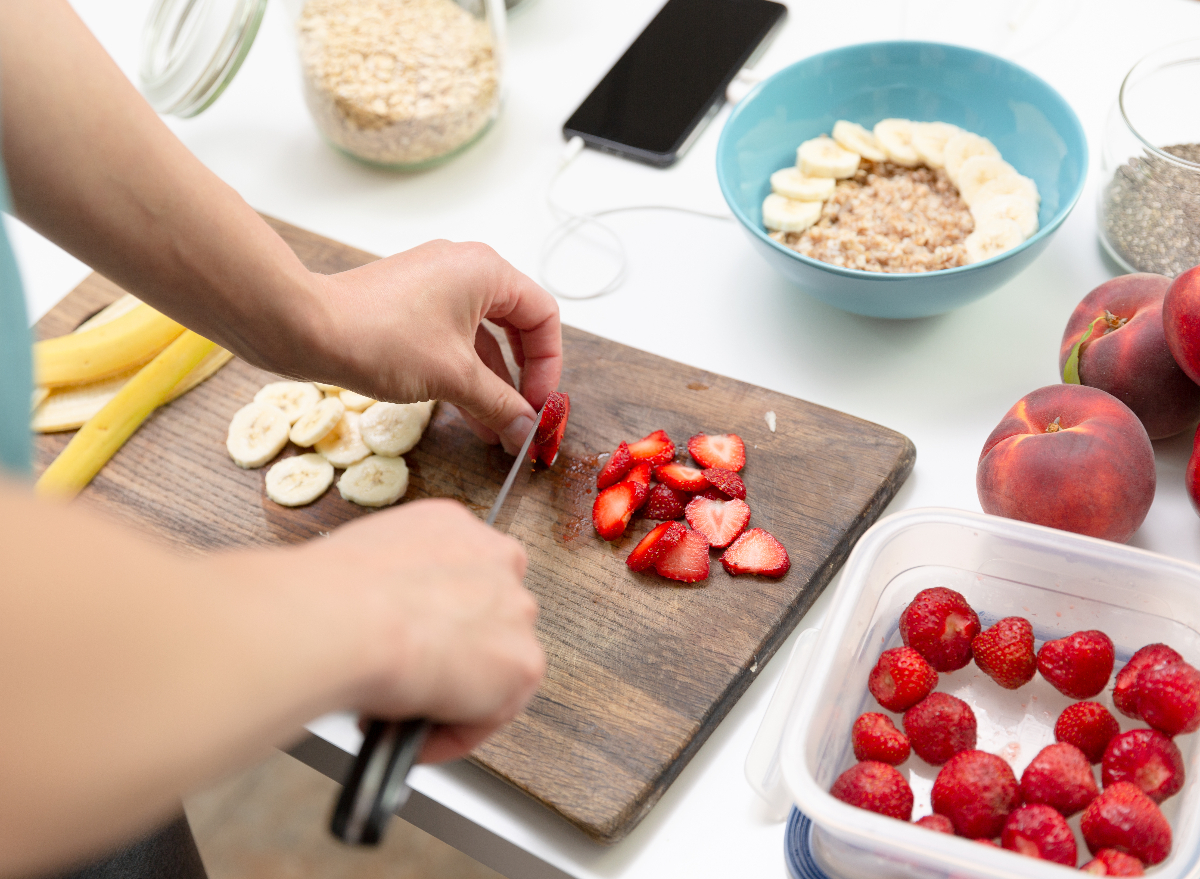
Losing weight is no easy feat—but keeping it off? That’s even harder. If you want to maintain a lean body for life, experts say the most important thing is adopting smart, sustainable eating habits.
“What helps you lose and maintain weight are the habits that you incorporate into your daily life and that you follow consistently,” explains Blanca Garcia, RDN, who is a nutrition specialist at Health Canal. “Overly restrictive habits give you quick results. However, the problem with this approach is that once your reach your weight goal, you return to your old eating habits and gain that weight right back. Then you jump back on the restrictive diet and start the cycle all over again.”
In other words, there’s no reason to deny yourself the foods you enjoy—in fact, consistently doing so may just make you more likely to binge on them later on. Instead, dietitians advise adopting the following habits to keep that lean physique without all the yo-yo dieting.
Up your fiber intake
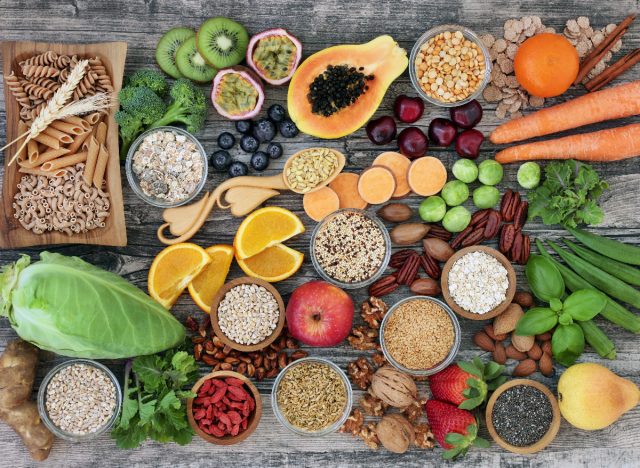
Most Americans do not have enough fiber in their diet, according to Juliana Tamayo, MS, RD, LDN, who is a clinical dietitian at FitnessClone.
“Fiber comes in many forms, from vegetables and fruits to legumes and whole grains,” says Tamayo. “Fiber can not only help your gastrointestinal tract stay healthy and regular, but it can also boost immunity and help remove cholesterol from your body. Because most fad diets eliminate carbs, they also remove fiber, which can cause problems including constipation, indigestion, fatigue, deficiencies in certain vitamins, and even poor immunity.”
While fiber has a lot of important health benefits, Tamayo notes that it’s helpful for weight loss because it keeps you feeling full for longer, thereby preventing overeating. Aim to consume at least 21–25 grams of fiber daily if you’re a woman and 30–38 grams if you’re a man.
Here are just a few high-fiber foods to consider adding to your diet:
- Berries
- Apples
- Broccoli
- Brussels sprouts
- Bran flakes
- Brown rice
- Oatmeal
- Black beans
- Lentils
Try volume eating

“Volume eating is a fascinating and relatively new concept to eating a balanced, nutrient-dense, low-calorie diet pattern without sacrificing hunger,” explains Trista Best, a registered dietitian at Balance One Supplements.
This approach centers around eating large volumes of foods that are low in calorie density. As a result, you can avoid those hunger pangs that often come with dieting.
“I’ve been following this diet pattern for a year and have found great success in weight loss and feelings of overall improved well-being,” adds Best. “My personal experience aside, volume eating can cause weight loss due to increased satiety from meals and lower calorie intake overall.”
Remember, with volume eating, calories do not need to be counted.
“You’ll simply want to eat according to your true hunger and stop eating when you’ve reached fullness,” adds Best.
To follow this approach, try prioritizing low-calorie, high-fiber foods like vegetables, beans, and legumes, at every meal. You can also try swapping high-fat protein sources for alternatives that are lower in fat.
Include protein at every meal
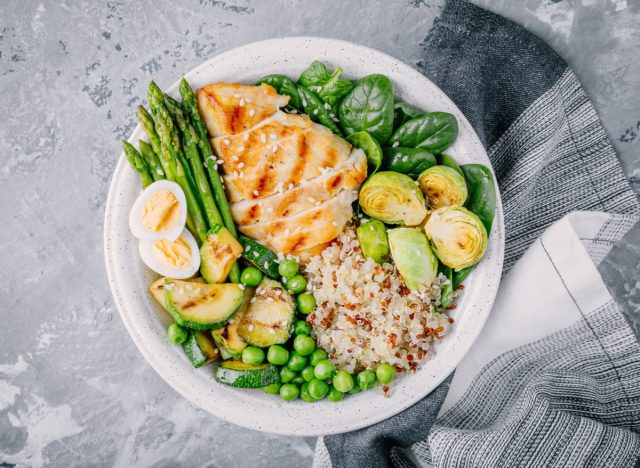
“Protein is essential for maintaining muscle mass, and it’s also more filling than other macronutrients,” says Krutika Nanavati, NSNZ, a sports dietitian and registered nutritionist with ClinicSpots.
That’s why Nanavati recommends incorporating lean protein at every meal.
Here are a few examples to get you started:
- Breakfast: Nonfat Greek yogurt in a parfait, egg white scramble, or almond butter on a banana
- Lunch: Sliced turkey on a sandwich, hard-boiled eggs or chickpeas in a salad, or a side of low-fat cottage cheese
- Dinner: Lentils in a soup, shrimp or tofu in a stir-fry, grilled chicken in a grain bowl
Start pre-portioning out snacks
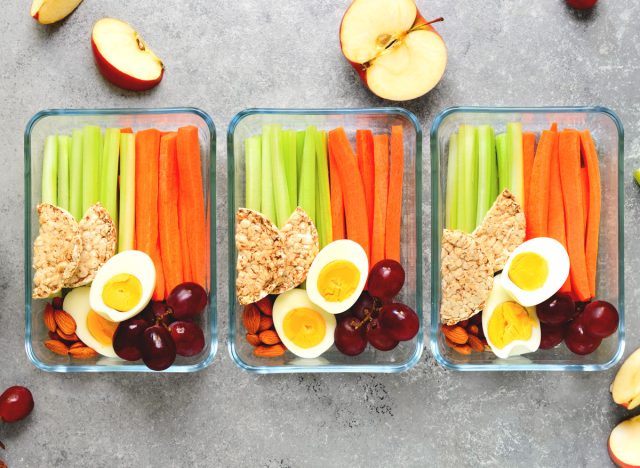
When snacking straight out of the bag, it’s all too easy to overindulge—even with healthy foods.
For this reason, Nanavati suggests starting to pay more attention to portion sizes. When packing snacks for work or even to enjoy at home, you may want to pre-portion them out into Ziploc bags or Tupperware, so you don’t feel tempted to go overboard.
When it comes to calorie-dense foods like nuts and seeds, nut and seed butters, dried fruit, and cheese, it can be helpful to bust out the measuring cups and spoons. The idea is just to get used to seeing what one serving size looks like, so that eventually you won’t have to measure them anymore but instead be able to visually tell what one portion really is.
Prioritize whole foods over processed ones
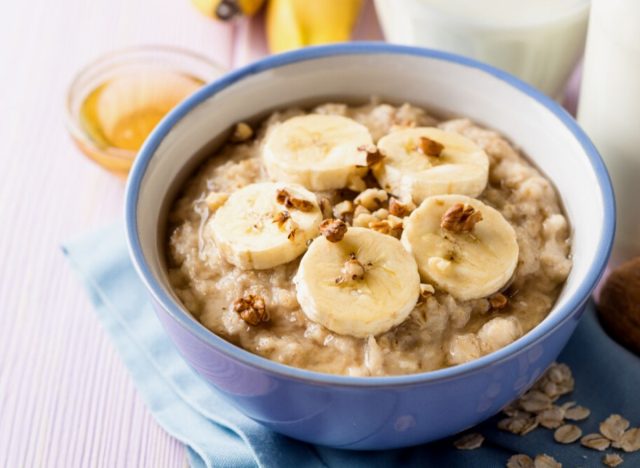
In addition to helping you lose weight and keep it off, one of the best things you can do to support your overall health is to ditch processed foods and replace them with more nutritious alternatives.
“Processed foods are often high in unhealthy fats and calories, and they can sabotage your weight-loss efforts,” says Nanavati. “Stick to whole, unprocessed foods as much as possible.”
Here are some examples of some simple swaps that can help you achieve—and maintain—a lean body:
- Instead of cereal with added sugar, have a bowl of oatmeal with cinnamon and chopped nuts.
- Instead of salt-laden greasy potato chips, make your own air-fried sweet potato fries or kale chips.
- Instead of drinking orange juice with breakfast, eat orange slices.
- Instead of packaged mayo on a sandwich, use homemade hummus or guacamole.
Add unsaturated fats to every meal
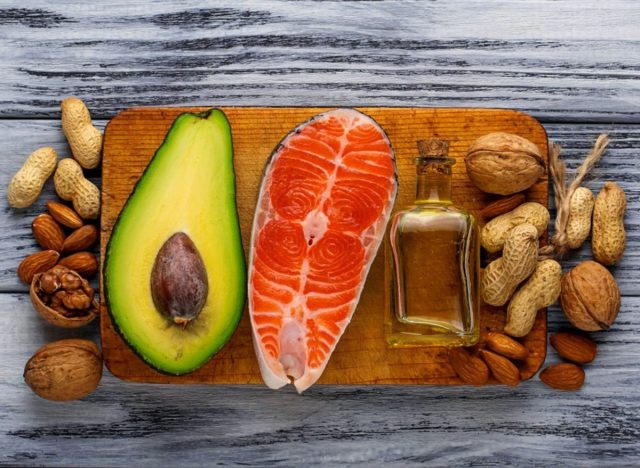
There’s no reason to fear fat when you’re trying to maintain a lean body—it adds to the satiety of your meals, just like protein and fiber do. That said, not all fat sources are created equal.
Ideally, Nanavati says you’ll want to stick with just the hearty-healthy fats—monounsaturated and polyunsaturated fatty acids. Whereas artery-clogging saturated fat is found in many animal products like bacon, steak, and cheese, unsaturated fats tend to be found in plant-based foods like nuts, seeds, avocados, and olive oil.
Fill half your plate with veggies

Since veggies are low in calories and high in fiber, they’re an excellent choice whether you’re trying to lose or maintain your weight. So, make it a point to pile them on for at least two meals a day.
“Aim for half a plate of vegetables at lunch and dinner,” advises Eva De Angelis, a dietitian nutritionist and health and nutrition writer at Health Canal.
De Angelis suggests incorporating a wide variety of vegetables in both raw and cooked forms in order to get the most diverse range of nutrients. For example, you might have raw carrot and bell pepper sticks with lunch, and then steamed spinach or roasted asparagus at dinner. And while you may not think to eat your veggies at breakfast time, remember that it’s easy to sneak some mushrooms or tomatoes into an omelet or some kale and carrots into a fruit smoothie.
Eat more pulses

The ideal foods for keeping your body lean are high in protein and fiber and low in fat—and a food type that definitely fits this bill is pulses. These are edible, dried seeds that come from plants in the legume family and include beans, lentils, chickpeas, and peas.
“A good idea is to add pulses to a salad, or curries, or make some homemade dips,” says De Angelis. “If you’re not used to eating pulses, start slow, and aim to include them into one or two meals per week. From there, gradually increase your intake. If you tolerate a high-fiber intake well, you can eat them every day.”
There are endless ways to integrate pulses into your meals. Try adding some black beans to your morning scramble, mixing chickpeas into your tuna salad at lunch, or tossing some lentils onto your salad at dinner.









